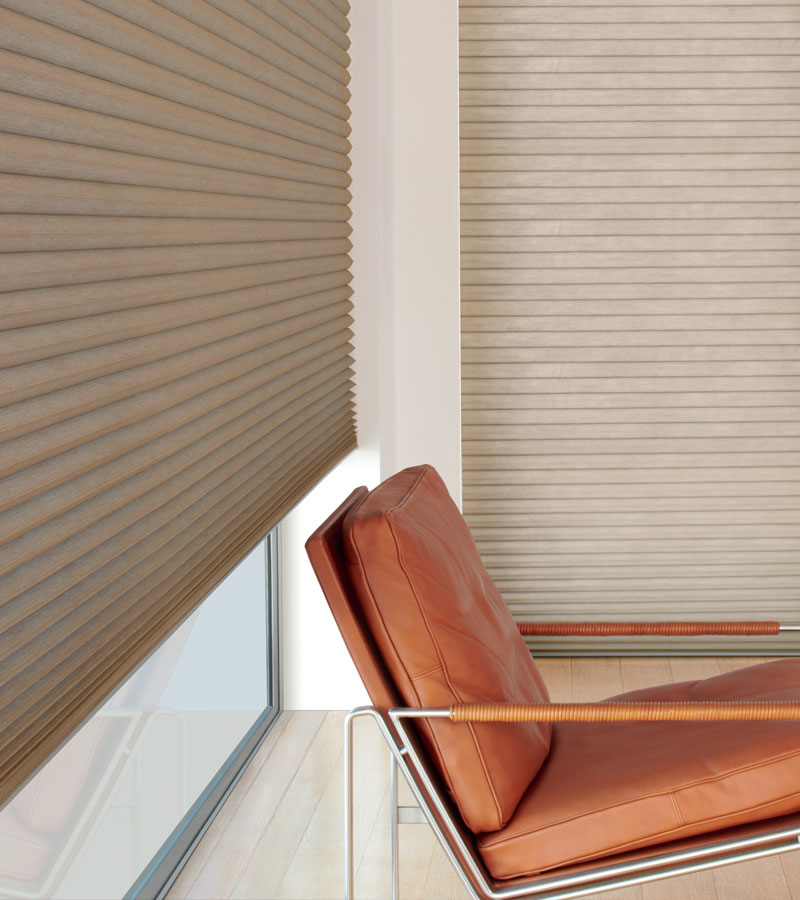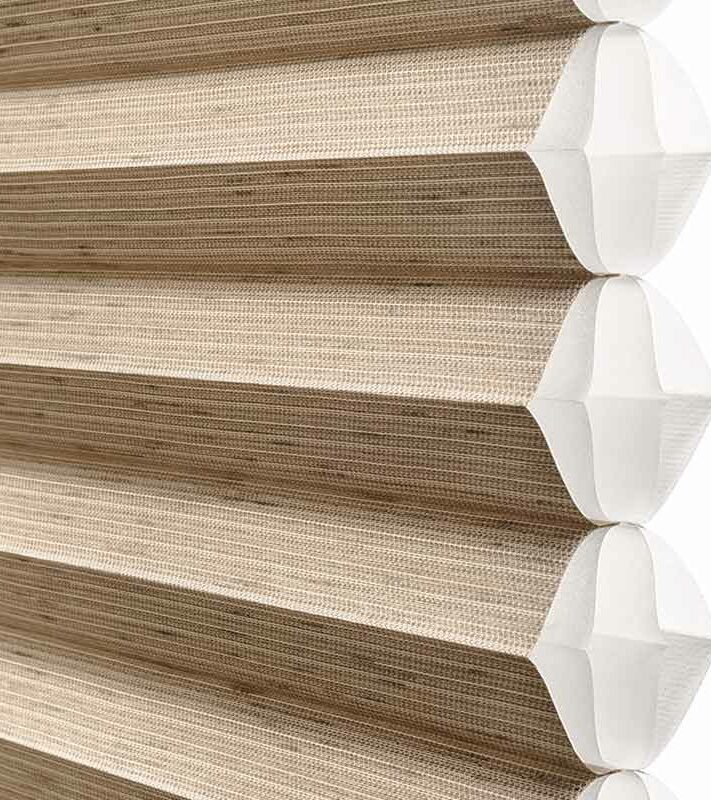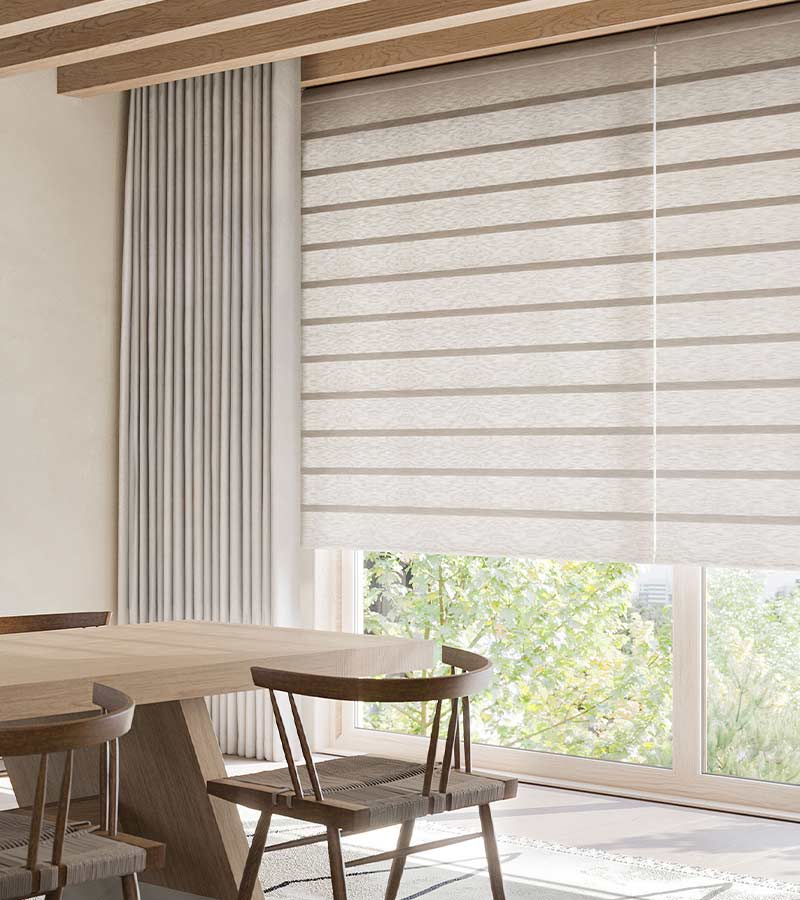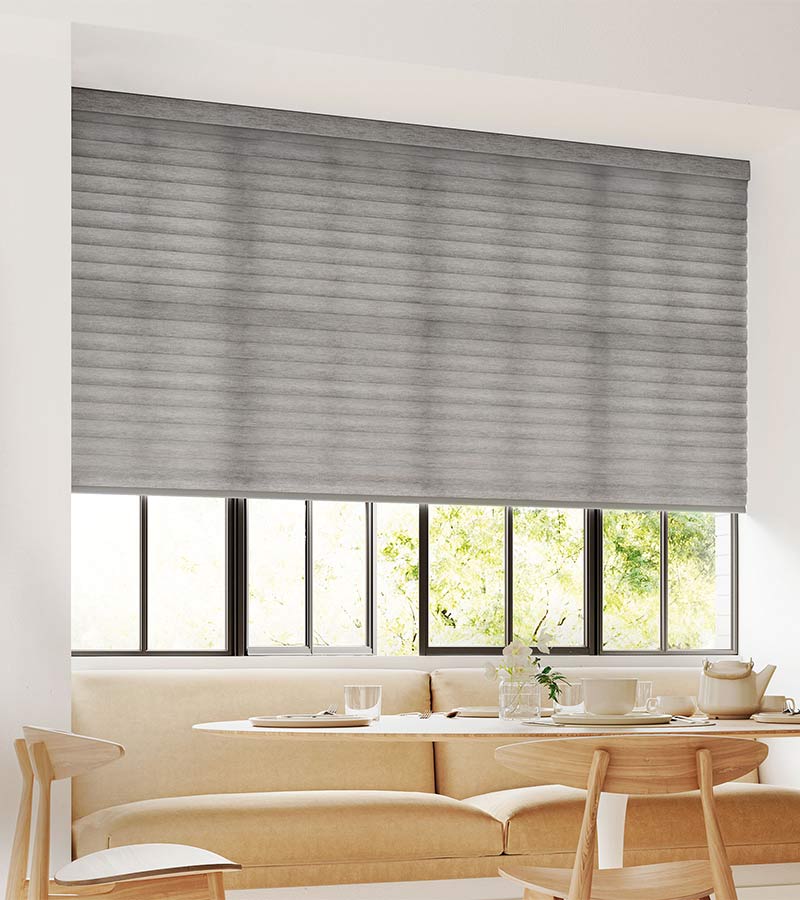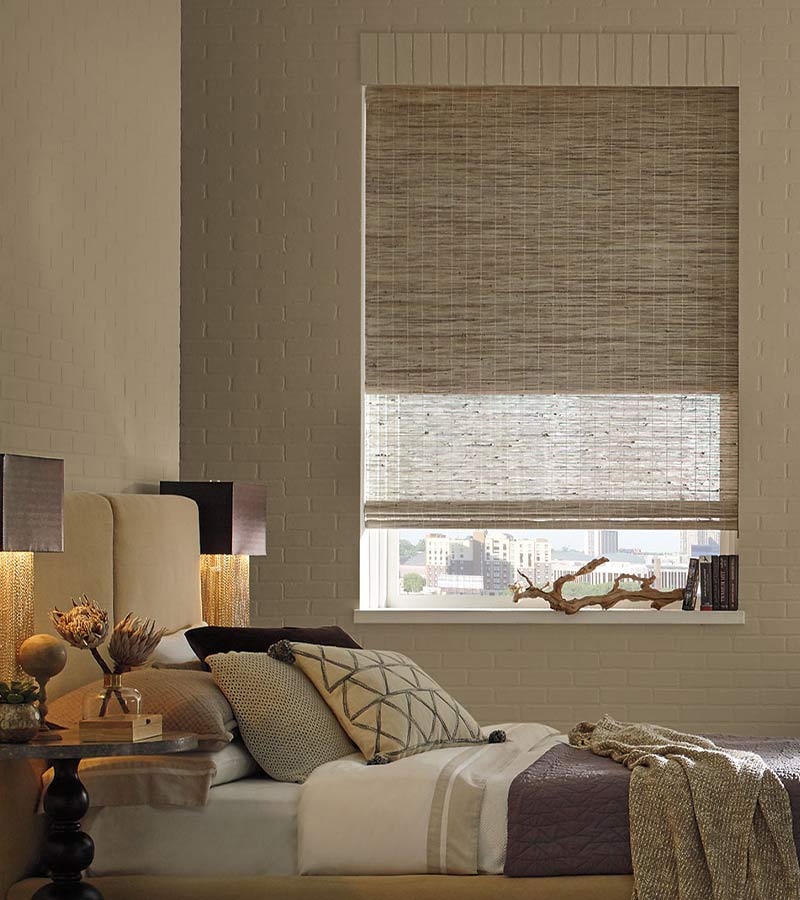Energy Saving Shade Features
- Cellular Structure Traps Air for Award-Winning Insulation
- Maintain Comfortable Temps Year Round
- Smart Shades Close to Increase or Decrease Temps
- Enjoy Savings on Energy Bills
- *NEW* Feature: Woven Woods with Energy Efficiency!
Available with
The Science of Energy Efficiency
If you want to solve a problem, the best thing to do is to try to understand the problem itself. When we say 40% of your energy can be lost at the window, how is it happening? And, what are the best ways to combat the issues? Let’s take a look.
When the Sun Shines In…
The idea of bright, mood-enhancing light shining through your windows might seem like the best scenario. But, what starts out as invigorating can quickly turn into frustration. When sunlight shines through your windows, two things begin to happen. You’ll notice the appearance of “hot spots,” a brightly lit area of the floor or wall, near your window. We call them hot spots because the temperature of where the light hits is significantly warmer than anywhere else. It’s why your pets are drawn to those areas. The intense heat warms them, and they drift off to sleep, basking in the sun.
Additional problems arise the longer the sun is allowed to travel into your home. We’ll call it the “greenhouse effect.” Once that hot area has been created, the air around it also warms up, being influenced by the continuation of hot spots being created as the sun moves across the sky–and throughout your home during the day. In most cases, that hot air has nowhere to go. It can’t escape. Similar to a greenhouse, the sunlight enters, warms everything up, and the interior of your home feels like an oven.
Another problem occurs right at the window. When the air outside is moving, just on the other side of the glass, your interior air can be influenced by the temperature of the glass. This can depend on the type and quality of windows you have. But, if you’ve felt a cool draft in the early morning during chilly times of the year, it’s probably not your window leaking. Oftentimes, it’s air moving around, being changed to a different temperature. This can heavily affect the comfort your home in the summer months. You’ll either suffer from exhausting heat, or you’ll spend a fortune on running your AC around the clock.
How Do Thermal Window Coverings Work?
Let’s look at Honeycomb Shades, also known as Cellular Shades. To begin with, blocking the sunlight from entering your home can prevent hot spots, which can reduce the temperature changes in your home. At the window, honeycomb shades insulate the window by protecting your interiors from that air flow that is responsible for temperature changes. The cellular shape allows air to be trapped, separating the interior and exterior air from mingling. These shades allow you to easily keep your home cooler in the summer and warmer in the winter with less work from your utilities.
Any fabrics will help reduce the energy loss–some are better than others. When it comes to window coverings, we find that roman shades and draperies are a great way to protect your interiors, showcasing fabrics and folds of fabrics that can ward off the temperature changes. They also block the sunlight from entering, absorbing that heat and keeping it out of your space.
We’d love to help you find the best options for your home. Get in touch with our team at Skyline Window Coverings to discover which energy saving products will work best for you.





